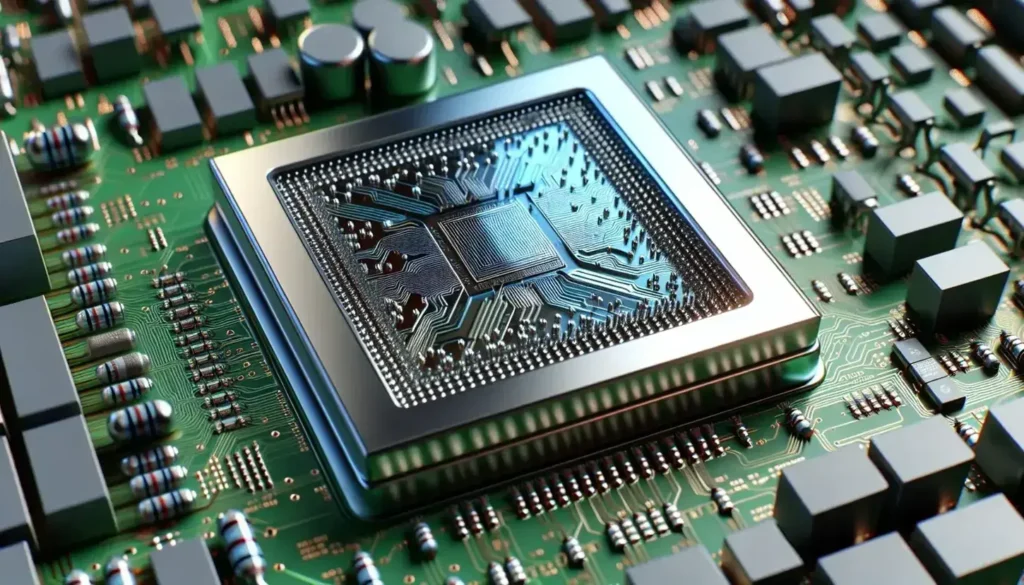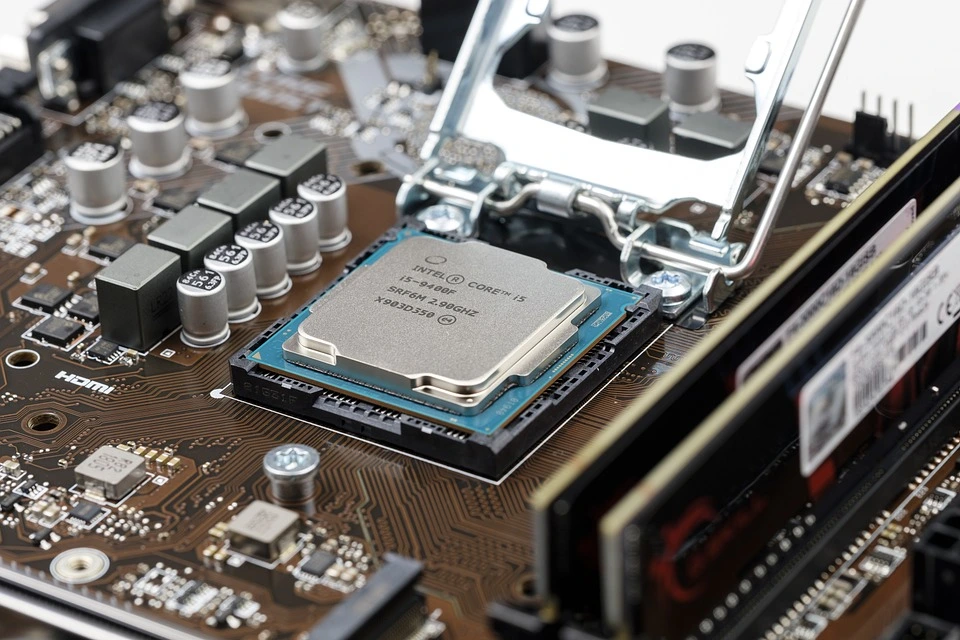Introduction
Have you ever wondered Is a CPU Register Falling Edge? This question delves into the basics of CPU architecture and digital logic. A CPU register is a small, fast storage element within a processor, crucial for temporary data storage during computations. The term “falling edge” comes from digital signal transitions in electronics, where signals change state. This article will explore whether CPU registers are tied to falling edges, their role in system operations, and how signal transitions affect processor functionality.
Read more about Can a CPU Get Too Cold?
A CPU register can use a falling edge if its design specifies it. A falling edge means the register works when the clock signal changes from high to low, storing or transferring data during that moment.
What is a CPU Register?

A CPU register is a small, high-speed storage unit in a processor that temporarily holds data during computations. FRegisters enable the CPU to function efficiently by storing temporary data for calculations and enabling efficient instruction processing.
Read more About Do CPU Come with Cooler?
Key Features of CPU Registers
- Speed: Registers are the fastest type of memory in a computer. They operate directly within the CPU, allowing it to access data much quicker than other storage types, such as RAM or cache. This speed is crucial for the processor to perform tasks efficiently.
- Capacity: Although registers are high-speed, they are limited in size. Depending on the CPU architecture, they can typically hold data ranging from a few bits to 64 bits. This small capacity is sufficient for handling immediate tasks that require fast access.
- Purpose: Registers are designed for specific purposes, such as storing intermediate results, memory addresses, or the following instructions to execute. Examples include:
General-purpose registers: Used for arithmetic and logical operations.
Special-purpose registers: Include the program counter, stack pointer, and instruction register, which help manage the CPU’s operations.
Read more about Best CPU for LGA 1366
What Does “Falling Edge” Mean?
In digital electronics, a “falling edge” refers to the transition of a signal from a high state (1) to a low state (0). This is one of the two transitions in clock signals, with the other being the “rising edge” (low to high).
Why Are Falling and Rising Edges Important?
Clock signals are vital for coordinating operations in digital systems. These clock signals alternate between high (1) and low (0) states. The transitions between these states—the rising edge (low to high) and falling edge (high to low)—play a key role in ensuring the system works correctly and efficiently.
Read more about How Much Cooling Paste on CPU
Importance of Rising and Falling Edges
- Synchronization
The rising and falling edges are precise triggers for various components in a digital circuit, ensuring all parts work harmoniously. For example, a rising edge might signal a processor to begin an operation, while a falling edge might indicate the operation’s end. - Data Storage and Transfer
Many digital devices, like flip-flops or memory elements, depend on these transitions to store or transfer data. For instance:- A rising edge might trigger data to be captured and stored in a register.
- A falling edge could initiate data transfer to another part of the system.
Read more about Can I use 70% isopropyl alcohol to clean the CPU?
- Efficient Timing
Using both edges of a clock signal allows for more efficient time utilization in high-speed systems. Some designs, like double data rate (DDR) memory, leverage the rising and falling edges to transfer data twice in a single clock cycle, improving performance. - Control of Circuit Behavior
Edge transitions provide predictable points for controlling operations, minimizing errors caused by timing mismatches. This precision is essential in systems where multiple components rely on the same clock signal.
Read more about Should I Enable Limit CPUID Maximum?
Is a CPU Register Falling Edge Dependent?
CPU registers are not inherently dependent on the falling edge. Instead, they respond to clock signals, which can be configured to act on either the rising or falling edge.
- Clock-Triggered Registers
- Most registers operate on the rising edge of a clock signal.
- Some specialized systems or designs may use falling edges for synchronization.
Edge-Triggered Flip-Flops in Registers
Registers are essential components in digital systems, relying on flip-flops and specialized storage elements. These flip-flops are typically edge-triggered, meaning they operate based on the transition of a clock signal. Designers can choose whether the flip-flop reacts to the clock’s rising edge (low to high) or the falling edge (high to low).
Read more about Do I Need a New Motherboard for a New CPU?
How Edge-Triggered Flip-Flops Work
- Response to Clock Edges
Flip-flops store data when a clock signal transitions. In an edge-triggered flip-flop, data is captured precisely at the moment of the clock’s rising or falling edge, ensuring accurate timing and synchronization. This edge-specific behavior is critical for sequential circuits where precise timing is essential. - Design Flexibility
Engineers can configure flip-flops to be sensitive to the clock’s rising or falling edge. This flexibility allows designers to optimize circuit performance based on the system’s requirements. For example:- Rising-edge flip-flops: Often used for triggering operations like data loading.
- Falling-edge flip-flops are ordinary in designs where a delayed response or offset timing is needed.
Read more about Is a Low Profile CPU Cooler Good?
Control by Design
The behavior of registers—whether they respond to the rising or falling edge—depends on the CPU’s architecture and design specifications. For instance:
- High-performance processors might use both edges to achieve faster data processing, as seen in the double data rate (DDR) system. However, a single edge (rising or falling) ensures stable operation in simpler architectures.
Advantages of Edge-Triggered Flip-Flops
- Precision: They eliminate ambiguities by capturing data at a specific point in the clock cycle.
- Efficiency: Their predictable behavior simplifies synchronization across the system.
- Versatility: Designers can tailor their behavior to suit various applications and timing requirements.
Read more about Can I Plug a CPU Fan into an AIO Pump Header?
Conclusion
Edge-triggered flip-flops are at the heart of CPU registers, enabling precise data storage and control. By leveraging rising or falling clock edges, designers can create efficient and reliable digital systems that meet specific performance needs.
How Do Registers Respond to Clock Signals?
CPU registers respond to clock signals to perform their operations. Clock signals provide the timing reference for data loading, storing, and transferring processes.
Read more about how to stop icue high cpu usage?
Rising vs. Falling Edge in Registers
- Rising Edge: Commonly used for general-purpose CPU registers.
- Falling Edge: Sometimes used in specific scenarios, such as asynchronous operations or power-saving designs.
Applications of Falling Edge in CPUs
- Power Optimization
- Some designs utilize falling edges for low-power operations.
- Optimizing clock cycles helps save energy in embedded or mobile processors.
- Asynchronous Systems
- Falling-edge triggers are often used in asynchronous designs where operations don’t follow a uniform clock rhythm.
- Signal Delays
- Falling edges can handle delayed signal transitions for better timing in specific processor tasks.
Read more about CPU Machine Check Architecture Error Dump:
- Falling edges can handle delayed signal transitions for better timing in specific processor tasks.
Why Rising Edges Are More Common in CPU Registers
- Simplicity in Design
- Rising-edge designs are straightforward, making them easier to implement and debug.
- Industry Standards
- Most processor designs adhere to rising-edge standards for consistency.
- Efficiency
- Rising edges allow seamless integration with other components in the processor pipeline.
Read more about Is 50 Degrees Celsius Hot for a CPU?
- Rising edges allow seamless integration with other components in the processor pipeline.
Tools to Analyze Register Behavior
Understanding whether your CPU registers are falling-edge-dependent requires tools and software:
- Logic Analyzers
- These devices capture and analyze signal transitions.
- Oscilloscopes
- It is ideal for observing rising and falling edges in clock signals.
- Processor Debugging Tools
- Software like Intel VTune or ARM’s debugging suites can help you study processor behavior.
Read more about How to Determine a PNOZ Multi CPU IP Address:
- Software like Intel VTune or ARM’s debugging suites can help you study processor behavior.
FAQs About CPU Registers and Falling Edge
1. What is a falling edge in electronics?
A falling edge refers to the transition of a digital signal from a high state (1) to a low state (0).
Read more about How to See CPU Usage in InterWorx:
2. Do all CPU registers depend on the rising edge?
While most CPU registers depend on the rising edge, some designs use the falling edge for specific purposes.
Read more about Why Is My CPU Overclocking Itself?
3. How can I determine if my CPU register is falling-edge dependent?
Check your CPU’s documentation or use debugging tools to observe the clock signal transitions.
Read more about How to Clean CPU Without Compressed Air
4. Why are rising edges more common in CPUs?
Rising edges simplify design and adhere to industry standards, making them more widely used in processors.
Read more about What Games Can My CPU Run?
5. Are falling edges better for low-power devices?
Falling edges can optimize certain operations in low-power systems, but their effectiveness depends on the processor’s design.
Read more about Can the Intel i5 9300H CPU Be Overclocked?
Conclusion
To answer the question, is a CPU register a falling edge? The processor’s architecture and purpose determine its dependency on falling edges. While most registers rely on rising edges, falling edges play a role in specific scenarios, such as power optimization and asynchronous designs. Understanding these nuances helps one grasp CPU operations and improve performance analysis.





One thought on “Is a CPU Register Falling Edge? Complete Guide”